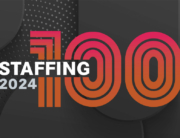Staffing firms explore the power of social media recruiting tools
It was the proverbial water cooler of the Internet. For most staffing firms, social media primarily served as a venue for friends — or colleagues and co-workers — to chit-chat and maybe exchange cute photos. The industry may have been late in jumping on this bandwagon but now savvy staffing firms and recruiters are using social media to build their brands, source talent, vet applicants and engage potential clients.
“Today, whether a recruiter realizes it and accepts it or not, we are a mediabased communications society,” says Kay Colson, VP of service delivery, Texas Children’s Hospital, for recruitment process outsourcing firm Kinetix. “The Internet, coupled with mobile devices, is the way people reach out, share information and get to know each other. If you want to be part of the current landscape and stay part of the current landscape as we move into the future, you’ve got to do it.”
While LinkedIn, Facebook and Twitter are the primary platforms on staffing firms’ minds, others factor into social media strategies as well. But often LinkedIn is the first stop for both recruiters and workers.
Linking In
When Colson gets a call from recruiters, her first step is usually to look them up on LinkedIn: Who are they, what have they done, where have they worked and what are their specialties?
“I’m much more likely to be responsive to a recruiter if I can see that they are accomplished,” she says. “Vice versa, a recruiter is looking to see if the person they are recruiting is accomplished.”
From both the candidate and recruiter perspective, the question is, “Who are you and what can you do?” Colson explains. “Your LinkedIn profile should show that, and if it does, then people will know that. And if it doesn’t? Well, then people will know that, too.”
Kelly Services Inc. focuses on four main social media platforms for its social outreach — LinkedIn, Facebook, Twitter and Google+ — but LinkedIn is its largest channel. The firm provides all its recruiters with LinkedIn’s professional recruiting services, which allows them to operate within the LinkedIn technology in particularly specific ways to find and target needed talent.
“LinkedIn is also a career-type channel, if you will,” explains Lorrie Sole, Kelly’s senior global manager of digital marketing. “Because of that, they partner with us more.”
LinkedIn provides Kelly with a dedicated resource to contact for help as well as access to new technologies and information that may be in the works.
“And because we are in the staffing business, they like us to test it out or even help improve it,” Sole says. “That’s a real plus to us and for our candidates.”
But it’s not all about LinkedIn. Interestingly, Randstad US’ most recent Employer Branding Survey found Facebook, not LinkedIn, is the most widely used social media tool for searching for a new job, at 70% versus 49%, respectively. Therefore, employers that maximize the benefits of Facebook as a talent acquisition platform can potentially strengthen their online recruitment strategies, according to Randstad. The survey also found 42% of respondents use social networking sites to search for jobs.
Tapping Millennial Talent
For staffing firms, it’s all about going where the candidates are. And with millennials, it means hanging out on various social networking sites. Randstad, the second-largest global staffing provider, is gearing up its social media strategy to target this next generation of workers. Nearly half of millennials, 43%, plan to actively look for a new job in 2015, according to a study released earlier this year by Aon Hewitt, and this generation — those born between 1979 and 1996 — will also be the predominant workforce in the coming years.
Randstad has a strong presence on Facebook, Twitter and LinkedIn, but also finds a place on YouTube and is looking at newer social tools like Pinterest, Instagram and Snapchat to attract millennials’ attention. Some of the newer platforms are used mainly to build a firm’s brand, while others can be used particularly for recruiting. For instance, Randstad piloted a program on Pinterest where users can post and bookmark jobs.
“Millennials kind of think that they are underground a little bit on these other platforms,” Randstad Chief Marketing Officer Kristin Kelley says. “We have to start looking at those as viable ways to reach future talent. Although we are not heavily on those platforms yet, that is what we are really looking at.”
Millennials will use social media predominately to find jobs, to connect, and to engage with brands, says Kelley. Brands — especially staffing companies — must remember that a person who is engaged is more likely to remain aligned with or endorse a brand.
“Social media is a massive word, and what it means could be a hundred different things,” Kelley says. “People have to almost grasp it as it relates to this new generation specifically, because in the coming years they are going to be the majority of the workforce and they are so hyper-savvy connected on it. We have to look and feel the same way. And I think that is the challenge.”
Building Your Brand
Given the abundance of noise on these networks, some of the challenge is also about maintaining your identity. Glassdoor, which provides user-generated employer ratings, 30 counts more than million members. Its database includes more than 6 million completed reviews, salary reports, and interview reviews across 400,000 companies. A new review is posted every five seconds.
While job seekers use the platform to research potential employers, browse jobs and research salaries, Glassdoor can also function as a venue for staffing firms to tell their stories and build their employer brands: Why is the firm an attractive employer for a recruiter or internal employee, as well as for a contract or temp worker?
“A lot of contract job seekers these days will do research on who they are working with and who they are going to be placed with,” says Steve Burton, VP of marketing at Glassdoor. “So it is really key for a staffing firm to differentiate themselves.”
Burton strongly recommends companies respond to posted reviews and comments, either on the site or privately. They should also encourage current, engaged internal employees and temporary or contract workers to participate on the platform. Similar to the way consumers now check sites such as TripAdvisor for travel and restaurant review sites, job seekers today also seek out insiders’ opinions.
“I think that’s the big shift,” says Burton. “Smart staffing agencies, they are going to engage their candidates online using social media, and the ones that are not smart are the ones that are going to keep using the old ways of engaging candidates through email or through phone calls. Job seekers are actively researching companies every single second of the day on Glassdoor. I think social media is key to developing that relationship with that jobseeker.”
Job candidates and potential clients can also check out staffing providers on Yelp, a review site that counts “employee services” as a category across all its countries. Based on monthly traffic alone, it is important for industry firms to have a solid presence on the site.
“When we look at metrics, we know that 142 million unique monthly visitors came to the site on average last quarter,” says Corey Dane, manager of local business outreach for Yelp. “It’s a lot of people. It’s a lot of eyeballs, and they are looking to make super informed decisions.”
Like Burton, Dane recommends responding to comments and driving engaged employees to the site.
“It’s important for folks not to shy away from the site but instead guide people to it,” Dane says. “Leaving a trail of breadcrumbs and reminding the community that a staffing firm has a presence on Yelp is half the battle.”
Providing Meaningful Content
Content is what allows staffing firms to differentiate themselves. A ManpowerGroup Solutions 2014 survey showed that one in four job seekers or candidates considers brand/company reputation to be one of the three most important factors in making career decisions.
Engaging in online conversations and posting meaningful content is a great way for staffing firms and sector-specific recruiters to build their reputations and brands within the online social community of their targeted clientele.
However, a monumental shift in perspective and trust is underway regarding social media, according to John Patterson, global social media manager for Kelly. End-users worldwide view the typically large, recognizable brands as less trusted resources, while personal networks are becoming the more trusted source of information, he says.
“Word-of-mouth marketing essentially is what we’re talking about,” he explains. “I trust the message that comes from one of my friends or colleagues more than I ever would a message that comes from a brand, because I see that they are trying to sell me something.”
Kelly addresses this issue by arming its recruiters with the Everyone Social platform, which provides content curation, social sharing and analytics tools. The platform enables them to curate content specifically for their area of expertise.
“If I’m looking to recruit engineers, here’s content specifically of interest to those engineers,” explains Patterson.
At the end of the day, job seekers expect companies to have a strong online presence. Workers use social media to share their perceptions — good and the bad. At the same time, it is up to the employer to leverage information to enhance and protect their brand. Done right, social media can accelerate the recruiting process and drive worker engagement.







